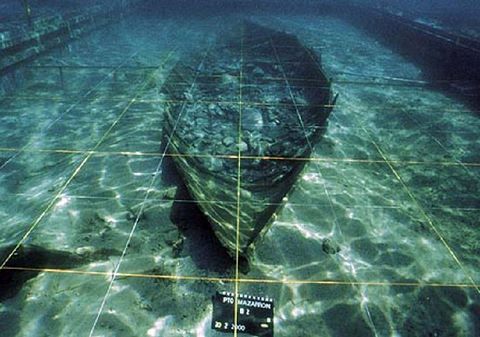
To be listed on the CAMPOSOL TODAY MAP please call +34 968 018 268.
Mazarrón beaches: Playa de la Isla
A curving bay with a deep sand fringe and an interesting history
The Playa de la Isla (“island beach” for obvious reasons) is a curving bay in an built-up area, with a long and interesting history lying beneath the normally tranquil surface of the Mediterranean.
For visitors today it’s a beach with a 600-metre frontage and an average width of 52 metres, fine, soft sand, and a tranquil traditional Spanish atmosphere, with a rocky island set just a short distance across the water. For summer visitors, it's a medium-high density beach, the lack of easy parking nearby resulting in most of the users coming from the apartments opposite, or those walking from the centre of Puerto de Mazarrón.
There is plenty of parking in the residential streets on the opposite side of the coast road, but in summer parking is always an issue.
During the summer there are lifeguard and first aid facilities, and limited disabled bathing seats during July and August from 11.30am to 7.30pm operated by volunteers from Protección Civíl.
There are access ramps onto the beach and wooden walkways across the softer sand to improve accessibility and all the standard services of toilets, waste and recycling bins, footwashes, play area for children and beach chiringuito (bar).
The beach is popular with snorkelers who enjoy the rocky shoreline in this area.

The history of this bay is much more interesting than is first apparent!
There is a building alongside the road at La Isla called the Phoenician boat Interpretation centre, which gives information about the two important underwater excavations which were carried out in this bay following the discovery of shipwrecked boats dating from the era in which the Phoenicians were active along this coast in the 6th and 7th centuries BC. The two Phoenician boats were ferrying cargos of ceramic amphorae, probably containing salt fish sauces and minerals, when they sank.
There are traces of their activity right along the Spanish coast, and some of the goods recovered from shipwrecks show that they were gathering minerals from northern Spain and even as far afield as Cornwall in the UK, trading cakes of smelted minerals for other trade goods.
The south-east of Spain provided fish sauces, minerals, esparto grass, and a number of other items, which were traded all along the Mediterranean coastline. Remains of Phoenician vessels are very rare, but three have been found in total off the coastline of the Region of Murcia, these two boats in Mazarrón in the waters off the Playa de la Isla and a third off the San Javier coastline.
The first boat found was in pieces, with very little of the original hull remaining, but the second, referred to as Mazarrón 2, is virtually intact, and is still buried beneath the bay in a protective steel casing while the arguments continue about what to do with it. One suggestion is to remove the boat and build a museum housing it on the corner of this bay, but some archaeologists argue it would be better left in the water and protected, whilst others believe it should be removed and taken to the Cartagena ARQUA museum of subaquatic archaeology where it can be conserved and exhibited.
Currently the ARQUA museum holds the remains of Mazarrón 1, which to the untrained eye look like just a few bits of driftwood, and a reproduction of Mazarrón 2, and no firm course of action has yet been initiated to extract Mazarrón 2.
For more local information go to the home page of Mazarrón Today, or here for an overview of all 33 beaches in the municipality of Mazarrón.
Other Mazarrón Beaches























